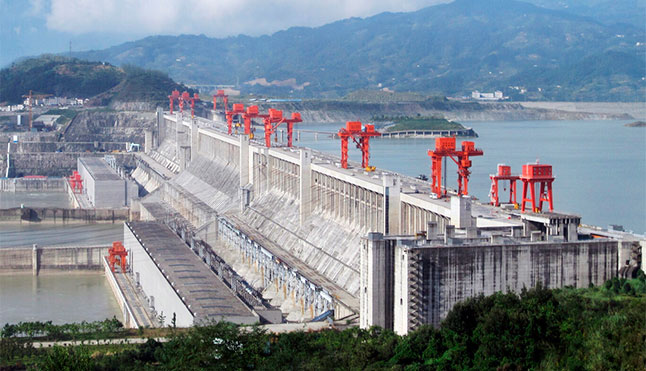
Honestly, at this point it is difficult for you to be surprised that China is hosting something that is "the largest in the world" in its class if you read us regularly, because this country is a record (and many times). It has the longest bridge in the world and we recently told you that it has also managed to build the longest glass bridge in the world, but they are also the builders of the largest hydroelectric dam in the world. As redundant as it is true.
It is the Three Gorges Dam and is responsible for retaining and harnessing the waters of the mighty Yangtze River. It is the longest river in the country, on the Asian continent and the third longest in the world (its name, not surprisingly, means "long river"), and for something like that, obviously a dam "as small" as the usual.
22.500 megawatts and more than 2 kilometers of dam
The Yangtze is born in the Tibetan plateau, in its 6,300 kilometers it passes through Wuhan and empties into Shanghai, although the Three Gorges Dam is located in the city of Yichang (in the province of Hubei), which is more or less in the center from the country. In that city there is this dam that, as they said in Magnet when talking about the most beastly mega-constructions that mankind has created to produce energy, is the largest power plant in the world with a capacity of 22,500 megawatts.
Its construction of the dam officially began on December 14, 1994 (ceremony included, of course), but the idea of doing it is much older, since in 1919 there was already talk of the possibility of building large dams on this river to control floods and also take advantage of energy as referenced in this complete study by the CSIC.
Since 1930, studies were being carried out to carry out a large project around the idea of a huge dam, although it was not until 1944 and the collaboration of an American dam expert (J.L. Savage) that the final trigger was given. But the economic crisis and the situation of civil war in the country brought it to a halt in 1947 until it finally restarted at the end of the 20th century, favored by Mao Tse-Tung's wish that China have the largest hydroelectric plant in the world (and he even made a poem with his intentions to achieve it).
Putting history aside, finally in 1993 the project consisting of a "multipurpose" dam was approved, aimed at flood control, navigation and energy production. The design that was started was that of a concrete block 185 meters high and 2,310 meters long, forming a reservoir (called Gorotkia) with an estimated capacity of 39,300 million m³.
Initially it was planned that the dam would contain 26 hydroturbines (14 on the north side and 12 on the south side), estimating a capacity of 18,200 MW (700 MW per turbine). But finally there are 34 hydroturbines, adding six underground and two of 50 MW to the initial ones, to achieve those 22,500 total MW that we said of total power.
The dam, finally, was 2,209 meters long. Such a large concrete construction had the risk of the cement cracking and overheating, but precedents such as the great Hoover Dam served to devise cooling methods for it (cold air before mixing and high speed conveyors, in this case), and in total more than 28,000 million m³ of concrete were used. Almost nothing.
The first generator (on the north side) started work in July 2003, and during the construction phases more than 1,200,000 inhabitants were relocated due to the scale of the construction (there is even a film about it, ' Still life'). The work officially ended on May 20, 2006, for a total of 11 years of construction (less than the estimates, which were 17).
Some 27,000 people worked on the project and more than 100 million m³ of land was displaced, submerging some 630 square kilometers of Chinese territory. It also contains the largest boat lift in the world (although it is not as pretty as the Falkirk Wheel, which allows boats (up to 3 tonnes) to overcome the 113 meter drop in the river between the before and the after the dam (in the video below you can see it under construction around 17:20).
A great construction with enormous effects on the country and on the planet
With all those numbers that we have shown you, the dam is a full-blown mega-construction. Not surprisingly, according to NASA, among its consequences is the alteration of the Earth's axis of rotation (about two centimeters), which meant an increase in daylight hours of 0.06 thousandths of a second, although according to Miguel Sevilla, deputy director from the Institute of Astronomy and Geodesy of the CSIC and professor at the Complutense University of Madrid, already explained that "it is something that happens every day" due to the action of the earth's core or the tides.
In fact, the project (and especially its final construction) was controversial due to the consequences derived from its size. In the CSIC study that we cited earlier, the environmental consequences of any dam were already raised, with chemical and geological changes that influence biodiversity, blaming the work for the disappearance of the baijí dolphin, endemic to the area.
There were also archaeological losses of relics located in the vicinity of the river due to the flooding of lands, among which were elements of the Paleolithic, Neolithic and works of the Ming and Qing dynasties, among others. Not to mention those relocations that we have mentioned before of more than a million inhabitants.
xataka.com
